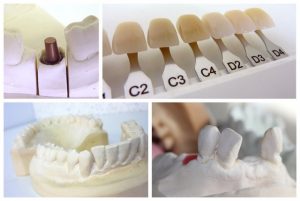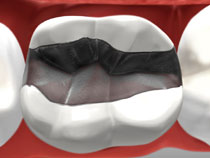
Do you have a chipped, broken, or cracked tooth?
We welcome dental emergency patients. We will fix your damaged tooth in time for the prom or that important meeting! It will look natural and as pleasing as it was before it was damaged.
Bonded, white dental fillings
 Not too long ago, filling in a hole or cavity had only one solution, metal or amalgam fillings. Now, after many years of advanced science in dentistry, we can now fill a tooth with resin compounds that bond well to your tooth to create a strong durable filling that blends in with the color of your teeth.
Not too long ago, filling in a hole or cavity had only one solution, metal or amalgam fillings. Now, after many years of advanced science in dentistry, we can now fill a tooth with resin compounds that bond well to your tooth to create a strong durable filling that blends in with the color of your teeth.
Restorations with composites can usually be completed with a single appointment, and and are the best alternative to amalgam fillings. The dentist removes the weak decayed area and fills it in with composite resin. It is hardened with an ultraviolet light. Finally it is polished to make it feel smooth to the tongue and surrounding tissue.
Composite fillings are very aesthetic as they easily match the colour of surrounding teeth, providing a natural look. Fillings do not last forever so it becomes obligatory that you visit the dentist regularly for further examinations. Fillings can wear down or simply fall out due to the force caused by chewing.
Sometimes teeth damaged by fractures or cavities cannot be repaired with fillings. The solution is an onlay or inlay restoration, which replaces a larger portion of the tooth. The restoration is done by taking a mould of the tooth and re-creating the mission portion of the tooth in a dental lab. On the second visit to the dentist the inlay or onlay is bonded into place.
Crowns
A crown, is in reality, a cover on the tooth that preserves it and stops further damage to the tooth. Crowns can also be used to correct teeth cosmetically to create a much more radiant smile. Dental crowns can be made of porcelain, gold, or by combining metal and porcelain. Installing a crown is usually done in two or three appointments.
A dental crown is usually done when:
- Too much tooth structure is lost from decay or fracture.
- A crown over time does not fit properly.
- Root canal has been performed.
- A cosmetic repair is needed.
- A bite is misaligned.
- On top of an implant.
Steps involved in preparing a dental crown:
- Numbing the tooth locally.
- Decay removed and filled.
- Tooth mold taken.
- A temporary crown is installed.
- A lab makes the custom mold.
- Temporary crown is removed and permanent crown installed with proper adjustments.

